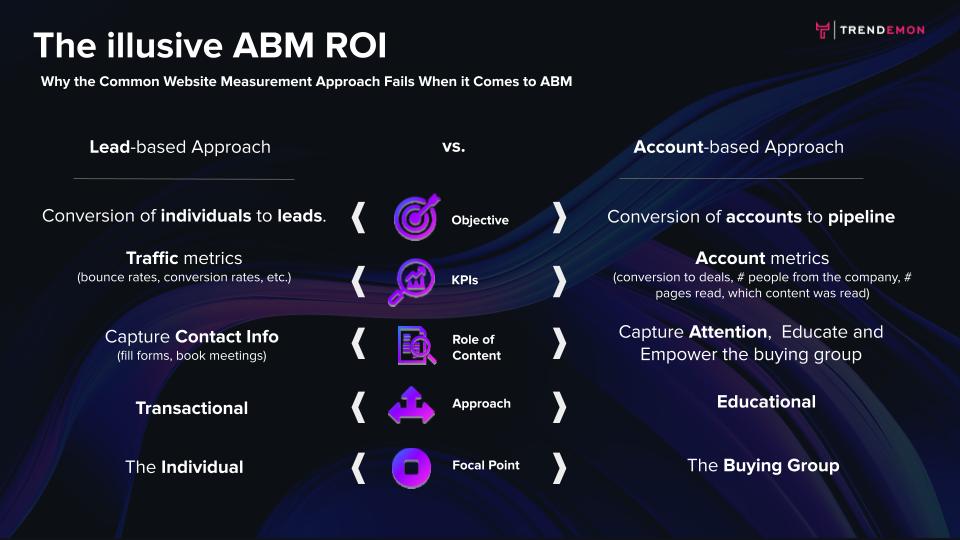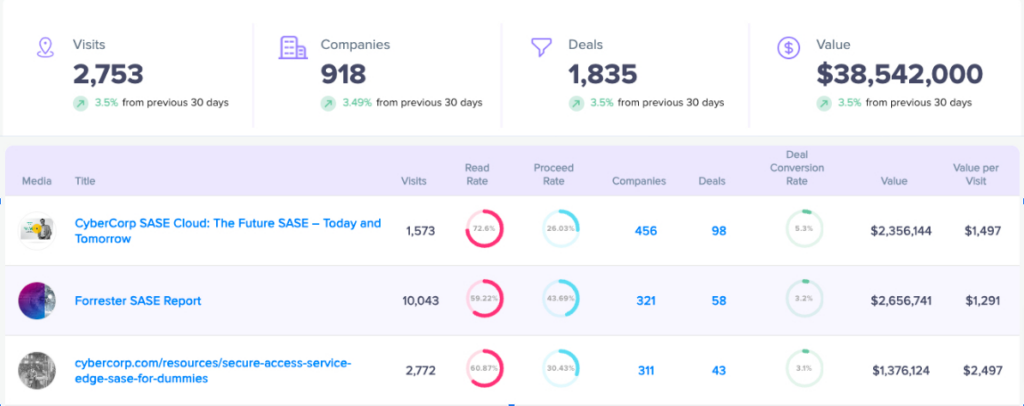Rethinking Conversion Metrics: The ABM Perspective

In the realm of B2B marketing, traditional website conversion metrics, though popular, fall short when it comes to measuring the impact of Account-Based Marketing (ABM). The essence of ABM lies in its targeted approach, focusing on the buying group and account levels, rather than the individual lead. This fundamental difference is where the traditional metrics show their limitations, offering a skewed understanding of ABM’s true effectiveness.
Beyond Leads: The Account-Centric Lens
ABM strategies are designed to engage specific accounts, tailoring interactions to the collective needs and behaviors of the buying group within an organization. Traditional metrics, which prioritize lead generation and individual actions, fail to capture this nuanced approach. By focusing solely on lead-level data, businesses risk overlooking the broader, more meaningful interactions that ABM nurtures within target accounts.
The Misleading Nature of Lead-Level Metrics
Lead-level metrics, while useful in other contexts, can be misleading in the ABM framework. They offer a partial view, emphasizing quantity over quality and potentially misrepresenting the success of ABM efforts. For instance, a high volume of leads does not necessarily indicate effective engagement with key accounts or progress towards strategic business objectives.

A Call for Account-Based Metrics
To accurately assess the impact of ABM, businesses must adopt account-based metrics. These metrics consider the collective interactions and engagement of the entire buying group within a target account. By doing so, they provide a more comprehensive picture of how ABM strategies influence account progression, engagement quality, and ultimately, the alignment with business outcomes.
A Real World Example
When trying to attribute the impact of the website on a given sales opportunity, we traditionally looked at the conversion of 1-2 web visitors into MQL or SQL, and see if that contact was also connected to an active opportunity in the CRM. In this approach, we are essentially peeking through a narrow keyhole. We know that a typical buying group consists of 7-13 people (the numbers are even higher when it comes to qualified accounts, see Trendemon’s buyer journey stats). This approach may account for only 10% of the actual impact of the website on deal. In the ABM approach, we look at all the visitors from an identified company, known and unknown, analyze their behavior and engagement with the website, and then can attribute the group’s activities to the conversion of the account to deal.
This gives us a much better understanding of which assets, channels and experiences played a role in the account’s journey. These insights can be used to find the real ROI of our efforts as well as serve as a guide for future activities and optimization efforts.
In Trendemon’s dashboard, under the Explore section, we show the impact of web pages on goals as well as deals. We do this by looking at the aggregate activity of visitors from a given company in relation to deals at different stages.

Conclusion
The shift towards ABM necessitates a reevaluation of how we measure success in B2B marketing. Classic website conversion metrics, while not obsolete, are insufficient in the context of ABM. By embracing account-based metrics, businesses can gain a clearer, more accurate understanding of their ABM efforts, ensuring that strategies are truly aligned with the goal of engaging and converting key accounts. This shift not only reflects the evolving landscape of B2B marketing but also paves the way for more strategic, outcome-focused marketing practices.